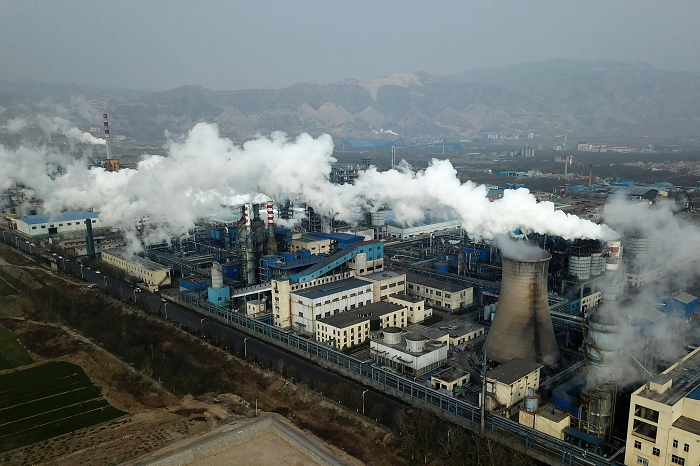
The rarefied world of luxury goods is facing a numerous challenge that strikes at the very heart of its allure: exclusivity. Social media platforms like TikTok have become a stage for Chinese factories to assert their role in producing handbags for iconic brands such as Gucci, Louis Vuitton, Hermes, Dior, Coach, and Prada, offering to sell these goods directly to consumers. This revelation, regardless of its veracity, casts a shadow of doubt over the industry and forces a critical examination of authenticity, origin, and the very nature of luxury in a globalized world.
Genuine or fake, impact on brand image
The immediate question is whether these claims point to the production of genuine goods or mere knock-offs. Either scenario presents a significant threat to luxury brands. If the claims are true and a substantial portion of the manufacturing process occurs in China, with only finishing touches applied in Europe, the ‘Made-in-Italy’ or ‘Made-in-France’ label loses its prestige and the premium pricing it commands. This exposes a vulnerability in existing system, particularly given the EU's lax country-of-origin rules.
Conversely, if these factories are producing counterfeit goods that are virtually indistinguishable from the originals, the brand's value is diluted. The core appeal of luxury items lies in their exclusivity and the status they confer upon the owner. As the document highlights, "The woman who spends $25,000 for a Louis Vuitton handbag does so for the status, knowing that very few belong to her class". The proliferation of indistinguishable, lower-priced alternatives erodes this exclusivity, undermining the brand's carefully cultivated image.
Is it misfired backlash
It's noteworthy that many of the luxury brands in question are European. While the claims originate in China, it's debatable whether this constitutes a "misfired" hit due to the ongoing trade tensions between the US and China. The issue at hand transcends geopolitics; it's fundamentally about brand integrity and supply chain transparency. Regardless of the broader political context, the potential for reputational damage to European luxury brands is undeniable. The focus is shifting towards the actual production of goods, and this is where China's role is being questioned.
Impact on genuine luxury buyers
The impact of this perceived dent in brand image on genuine luxury buyers, particularly in the US, is complex. It's likely to affect different segments in varying degrees.
Core luxury buyers: These high-net-worth individuals often seek out rare and exclusive items, valuing heritage and craftsmanship. While concerns about authenticity might give them pause, their purchasing habits may be less affected in the long run, especially if brands can reinforce their commitment to quality and exclusivity (e.g., through bespoke services, limited editions, and private sales).
Aspirational luxury buyers: This segment, which includes those who purchase luxury goods as a symbol of upward mobility, is more vulnerable. Their purchase decisions are heavily influenced by the perceived status associated with the brand. If that status is compromised, they may be discouraged from investing in luxury goods.
For example, Hermes a brand built on heritage and meticulous craftsmanship faces a crisis of confidence if doubts arise about its production processes. The strategic response must involve radical transparency, reinforcing the "made-in-Europe" narrative with detailed supply chain information, and potentially investing in even more exclusive, limited-edition offerings to reaffirm exclusivity.
However, a brand like Louis Vuitton with a broader appeal might see a more significant impact on its aspirational buyer base. Their strategy could involve diversifying into experiential luxury (e.g., exclusive travel, events) and focusing on brand storytelling that emphasizes heritage and artistry, rather than just the status associated with owning the product.
Even though precise figures on genuine vs. aspirational luxury buyers across the US, EU, and other regions are difficult to pinpoint, as these categories are fluid and depend on various factors like income, lifestyle, and purchase motivation market research firms like Statista and Bain & Company provide valuable insights into the luxury goods market. Reports consistently suggest the significant growth of the luxury market in Asia, with China being a key driver. This highlights the importance of addressing the current challenges to maintain brand value in this crucial market. Studies also indicate a growing demand for authenticity, sustainability, and ethical sourcing among luxury consumers, particularly younger generations. Brands that fail to address these concerns risk alienating a significant portion of their target audience.
Therefore, the claims on the production of luxury goods in China have started a crucial conversation about authenticity, origin, and the evolving nature of status. While the immediate impact on sales may vary, the long-term implications for luxury brands are profound. They must prioritize transparency, reinforce their commitment to quality and exclusivity, and adapt their brand narratives to resonate with a more discerning and informed consumer base. Failure to do so could lead to a significant erosion of brand value and a fundamental shift in the luxury landscape.












